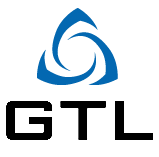Gloyer-Taylor Laboratories, INC. (GTL) formed in early 2004 from a merger of PacAstro and Aspect Engineering. After hurricane Katrina forced a relocation, the company established headquarters in Tullahoma, TN near the University of Tennessee Space Institute’s (UTSI) campus. In 2007, the company expanded with the addition of two new partners; one of whom was Dr. Gary Flandro. Through his expertise in combustion instability, Dr. Flandro had gained an audience with NASA to discuss thrust oscillation concerns in the new ARES launch vehicle’s solid rocket motors (SRBs). With his partnership, GTL obtained funding in 2008 to perform an analysis of the RSRM-V motors for the lunar launch vehicles. Convinced of GTL’s understanding of the problem, NASA directed GTL to Alliant Technologies (ATK) for further funding. Progressing forward, GTL identified the source of the instability and recommended a modified motor design with which to combat these sources. ATK incorporated a block upgrade into the Ares development cycle and gave GTL a letter of commendation for their help.
Building upon the Ares Thrust Oscillation work, from 2009 to 2010, GTL obtained several small business contract awards to develop their stability analysis tools. From this work, the Universal Combustion Device Stability (UCDS™) process was developed. UCDS™ has continued to be developed for the prediction of stability within propulsion devices, including liquid and solid rockets, jet engines, scramjets, and ramjets. In 2010, GTL began work on a NASA SBIR Phase I and Phase II contract, to develop a stable rocket engine for a lunar ascent vehicle. During this effort, GTL developed a unique and innovative combustion chamber with greatly improved stability, referred to as the Superior Stability Engine (SSE™). Through modeling efforts, GTL also predicted the instability that was observed in a competing lunar ascent engine design. Building upon this work, GTL continued to gain stability-related work to verify and increase the predictive capabilities of UCDS™ in liquid rocket engines. In 2016, GTL received an AFRL Space and Missile Command (SMC) funded effort to build and hot-fire test a workhorse SSE™. Simultaneously, UCDS™ has been developed for the prediction of stability within jet engine augmenters.
In parallel with the UCDS™ and engine development efforts, GTL has followed an innovative path in the development of their ultra-light weight cryogenic propellant tanks. Beginning in 2009, GTL received small business funds to test the capabilities of their advanced composite material, referred to as BHL™. Demonstrating load and temperature capabilities on test cylinders, this effort received a follow-on Phase II to develop a small 12” cryotank. Through a series of additional efforts, GTL continued to increase the size of the BHL™ cryotanks and demonstrate performance capabilities.
In addition to its primary system development efforts, GTL continues to develop innovative processes and systems. Additional funded efforts include plastic and composite materials, electrical systems, shielding technologies, and pressurization system development, and innovative flywheel designs.

![GTL-logo-2color-[white] Gloyer-Taylor Laboratories, Inc.](https://i0.wp.com/www.gtlcompany.com/wp-content/uploads/2018/10/GTL-logo-2color-white.png?fit=280%2C72&ssl=1)